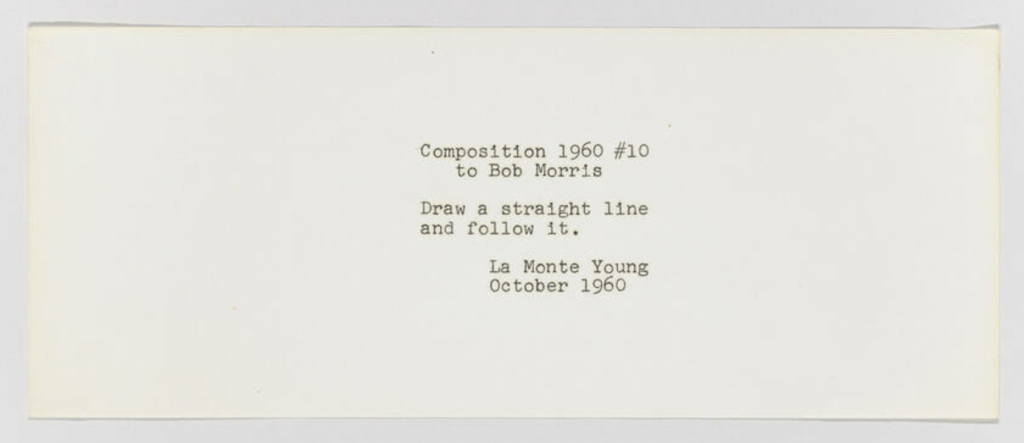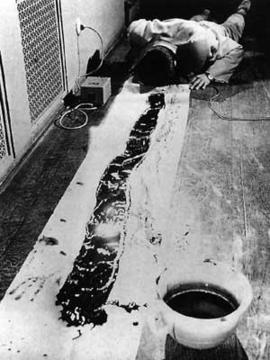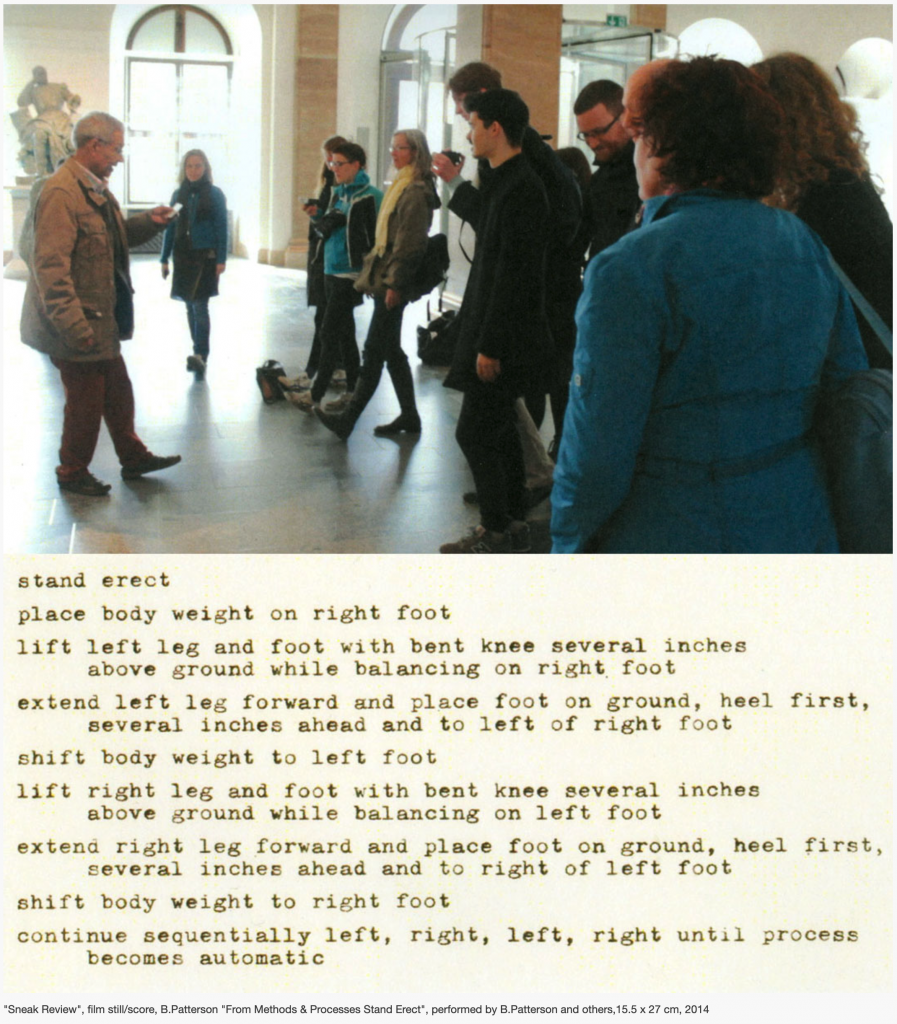“A man runs out of the Chelsea Hotel, 222 W. 23rd Street, N.Y. He runs east to 7th Avenue
then south to 22nd Street
then west to 8th Avenue
then north to 23rd Street
then east to the Chelsea Hotel which he reenters at the same speed.”
Critic Lori Waxman compares this score to Benjamin Patterson’s Man Who Runs (1963), and points out how race and place deeply affect these scores. Filliou is a white French Protestant with a glass eye referencing a hotel, while Patterson is a Black man and referenced the library.
Credit: Waxman, Lori. Keep Walking Intently: The Ambulatory Art of the Surrealists, the Situationist International, and Fluxus. Sternberg Press, 2017. Page 232.




